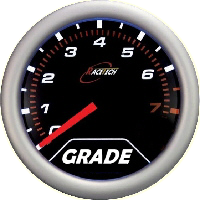Our Grading System

- Grade 1 & 2 — Elementary
- Grade 3 & 4 — Intermediate
- Grade 5, 6 & 7 — Advanced
Our grading system is divided into three major divisions, “Elementary,” “Intermediate,” and “Advanced,” with seven Grade subdivisions, numbered 1 through 7 (1 is easiest, 7 hardest.) The first six subdivisions are similar to those of the New York State School Music Association (NYSSMA.) We have added a 7th level for highly virtuostic works, works which are clearly a step higher than NYSSMA’s top level, Grade 6. Each of the seven Grades belongs to one of the major divisions, as such:
The following criteria serve as guidelines when assigning grade levels to new and existing works in our catalog database. As “guidelines,” they are sometimes overridden due to circumstances beyond the scope of what is listed here. These guidelines are used for all pitched instruments, and as such, it should be recognized that some instruments will be at an advantage and others at a disadvantage in some of the key technical areas (piano has no real range or tessitura issues for instance.) However, we feel we have included enough musical criteria to keep the system balanced across the entire orchestra.
Please note: Many items in our catalog do not have a numeric Grade. In these cases, the music is graded "Elementary," Intermediate" or "Advanced" without a corresponding number. This is done often with ensemble pieces, where individual parts might be at distinctly different numeric Grade levels. The label therefore describes the Grade of the piece "in general."
Grade 1
Typical first year player
Difficulty: Very easy or “elementary.”Time: 2/4, 3/4, 4/4.
Key: 2 keys on home side of circle of 5ths, plus maybe C (2-3 total.)
Tonality: Major & minor.
Rhythm: Whole, half, quarter notes.
Range: 5 - 8 notes.
Tessitura: same as range, minus “tricky” notes.
Dynamics: None.
Clef: Home clef only.
Length: Very short.
Grade 2
Typical second year player
Difficulty: Easy or “late elementary.”Time: Same as Grade 1 - 2/4, 3/4, 4/4.
Key: 2 keys in home area plus C and 1 on “far” side (4 total).
Tonality: Major & minor.
Rhythm: Same as Grade 1, plus add eighths, dotted rhythms.
Range: Octave to 12th, depending on instrument.
Tessitura: Home octave.
Dynamics: p, f, mf.
Clef: Home clef only.
Length: Short.
Grade 3
Average middle school & later elementary player
Difficulty: Medium or “early intermediate.”Time: Same as Grade 2 plus easy cut time and 6/8.
Key: 3 keys in home area plus C and 2 on “far” side (6 total).
Tonality: Major & minor.
Rhythm: Add simple 16th groupings and 16th flags on dotted eighths.
Range: 12th to octave.
Tessitura: Centers in home 10th.
Dynamics: pp. p, mp, mf, f, ff.
Clef: Home clef only.
Length: Short to medium.
Grade 4
Younger high school & later middle school player.
Difficulty: Intermediate.Time: Same as 3 but adds 3/8, 9/8, 4/2 and 12/8.
Key: 4 keys in home area plus C and 3 on far side (8 total).
Tonality: Major & minor, some Dorian, Lydian.
Rhythm: Add short simple (diatonic) 16th runs.
Range: 2 octaves.
Tessitura: Middle 12th.
Dynamics: pp thru ff plus fp.
Clef: Home clef only.
Length: Up to medium long, some multi-movement.
Grade 5
High school & early college level player.
Difficulty: Medium-difficult or “late intermediate” / “early advanced.”Time: Adds 5/4, 7/4, 3/2, etc standard meters. Standard time changes.
Key: 5 keys in home area plus C and 4 on far side (10 total). Standard key changes.
Tonality: Major & minor, Dorian, Lydian, other standard modes.
Rhythm: Add grace notes, 16th note chromatic runs, some 32nds.
Range: 2.5 octaves.
Tessitura: Middle 2 octaves, tending towards home 12th.
Clef: Home clef with brief, simple switches to next most common clef.
Dynamics: ppp thru fff plus sfz, fz, rf.
Length: Up to long, plus multi movement.
Grade 6
Typical college level player.
Difficulty: Difficult or “advanced.”Time: All times, mixed times (4 + 3/4 etc) and multiple time changes.
Key: All keys, “wrong key” & “no key” notation with dedicated accidentals.
Tonality: All modes, plus atonality.
Rhythm: All rhythms plus basic or short aleatoric sections.
Range: Full professional range as required by standard orchestral rep.
Tessitura: Central 85% of range.
Clef: Any clef as required by standard orchestral rep.
Dynamics: All or any.
Length: Any.
Grade 7
Advanced college & professional level player.
Difficulty: Very difficult or “virtuostic.”Time: All times & “none.”
Key: Same as 6.
Tonality: Same as 6 plus atonal, quarter-tonal, and alternate systems.
Rhythm: All rhythms, plus extensive aleatoric techniques.
Range: Full professional range with “athletic” hyper-extensions.
Tessitura: Anywhere in the full range.
Clef: Any.
Dynamics: All or any.
Length: Any, but especially applies to very long works.
